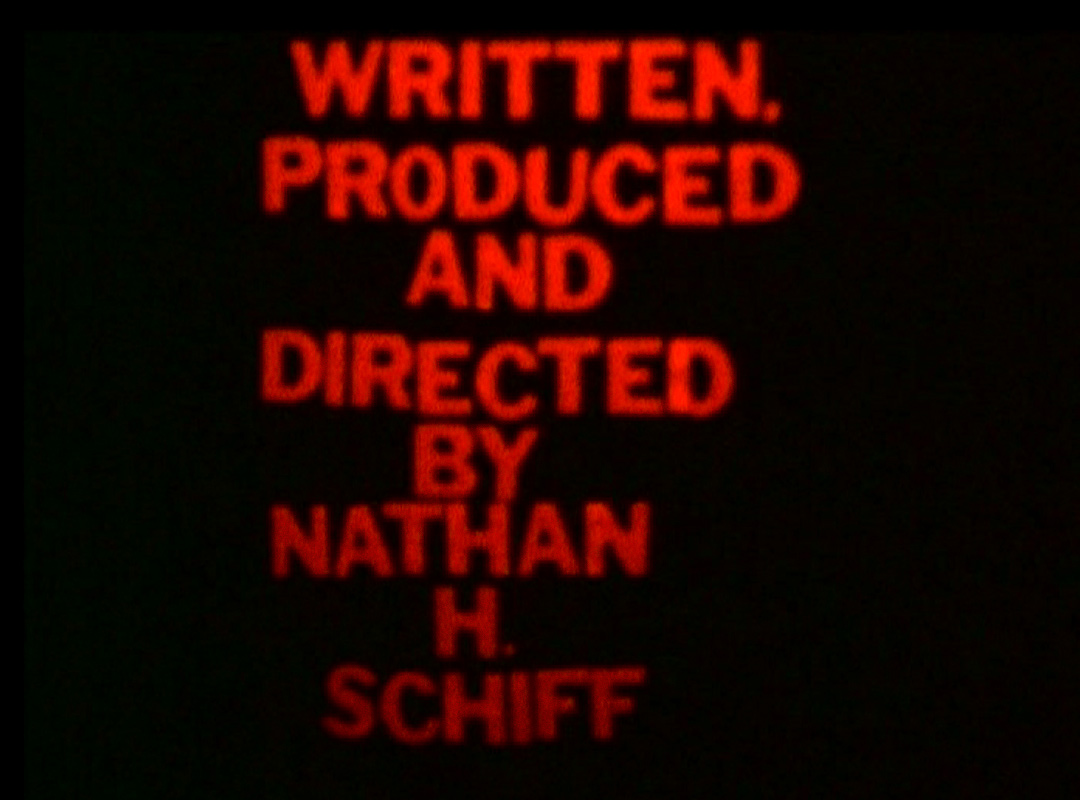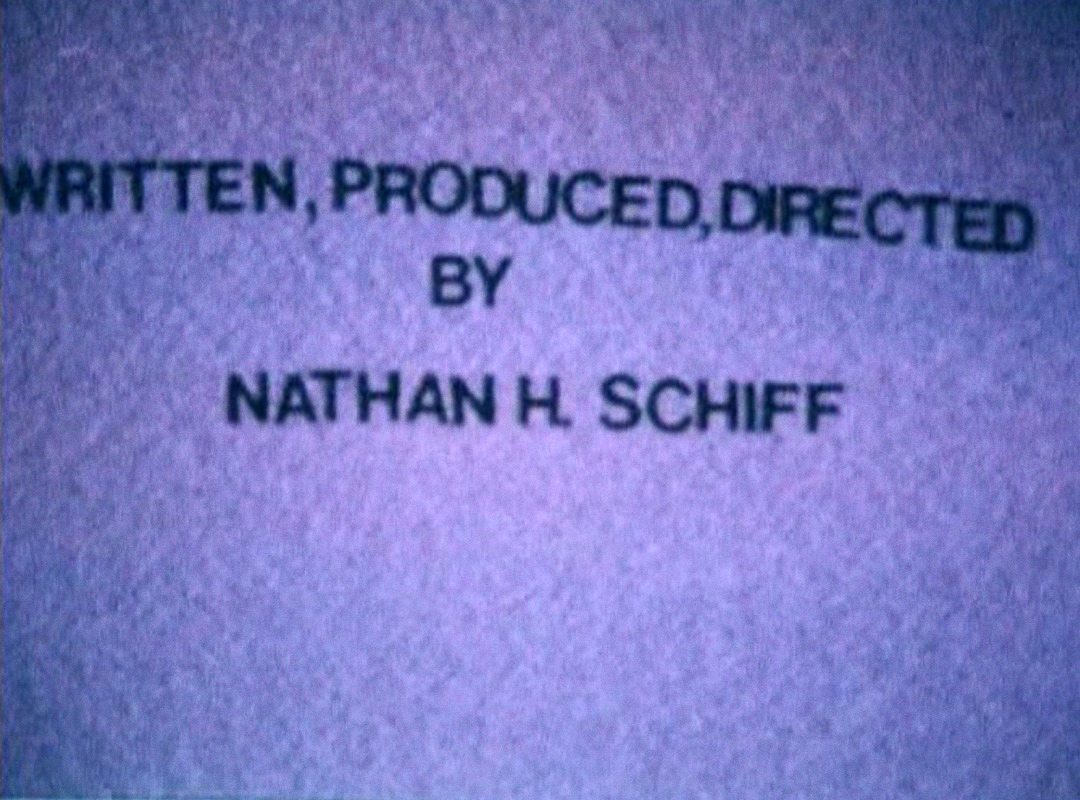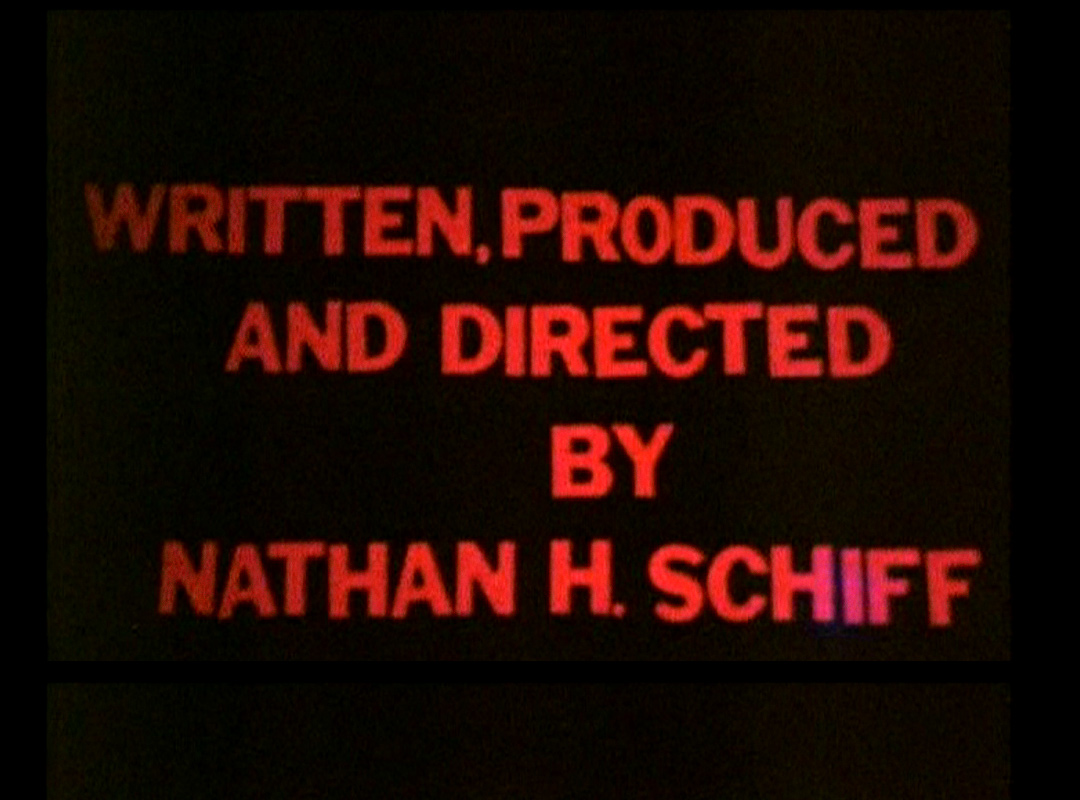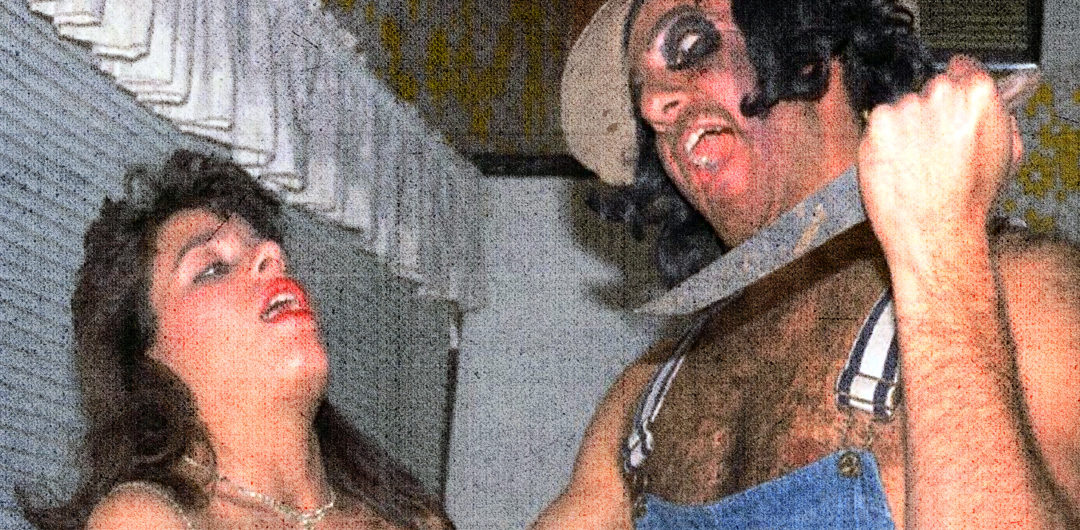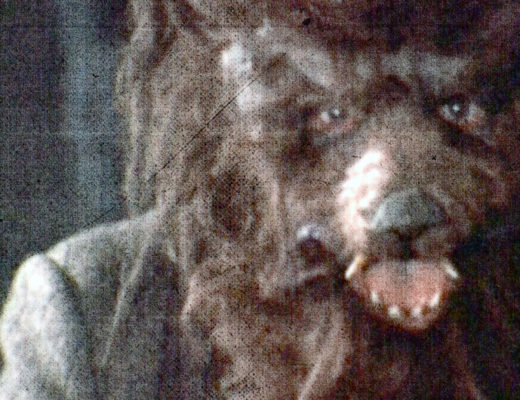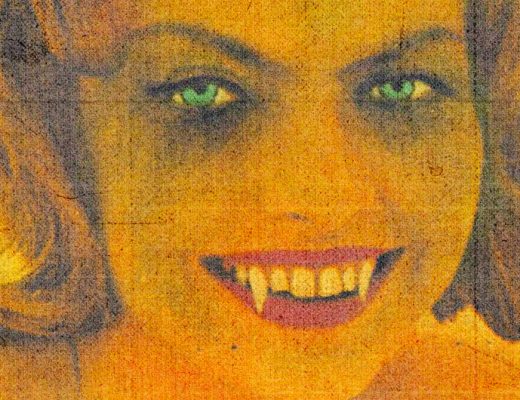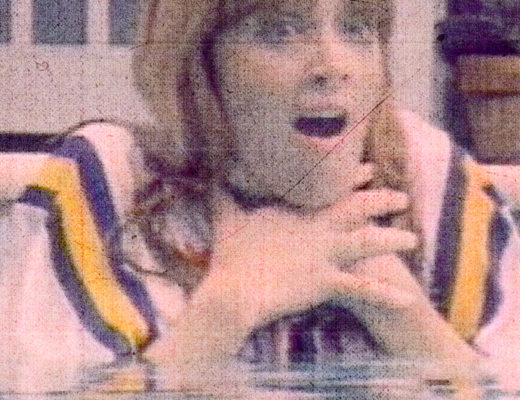You’ve got one minute. One minute to scour the caverns of your brain, in search of the greatest example of successful, zero-budget, strange filmmaking enthusiasm that ever dared to load a camera. I’m talking no money, no experience, and no connections; tapping into the basest of American dreams, achieving that dream, and living to tell about it. Can’t recall anyone, huh? Then you’ve never met Nathan Schiff.
Beginning in Long Island circa 1978, teenaged Nathan Schiff and company created some of the most perfect examples of filmmaking for the love of filmmaking that will ever exist. This is unmitigated, tangible glee: no aspirations to make money, no unrealistic pipedreams, and only someone’s backyard as a set. That the films were magically shot on Super 8 cameras for under $500 each makes the entire story that much more charming. And the result? A hodge-podge of grocery store gore (which grew increasingly more stomach churning as the films progressed), cut-and-paste spookhouse soundtracks, baffling monsters, and very thick Long Island accents. In other words, bizarre film nirvana.
In February of 2004, Image Entertainment foisted Nathan Schiff’s first three films onto an unknowing public through the wonders of DVD (Weasels Rip My Flesh, The Long Island Cannibal Massacre, and They Don’t Cut The Grass Anymore). Presented as extras-jammed special editions, these releases prove once and for all that the little guy doesn’t always finish last. Don’t believe me? Then take a gander below and hang onto your hat as Nathan Schiff speaks!
Bleeding Skull: First things first. How did the opportunity arise to release your Super 8 “gore trilogy” on DVD through Image?
Nathan Schiff: My friend Robert Marcucci suggested I put them out on DVD. He had a contact at Image Entertainment who knew of my films. Having examined screeners, much to my surprise they were green-lighted. Robert was also very much involved with the post production end, that is, preparing the film elements for a DVD presentation. Image is usually credited with the fine restorations, but it was actually Alan Bazin who was 100% responsible for the restoration. Robert & Alan had complete faith in these projects. It’s a testimonial to their talent and zeal, and the folks at Image.
BS: Before the release of these DVDs, I had never heard of your work. In addition to the regional NYC screenings you mentioned in the commentaries, how did you get the word out? Were you actively pushing the films throughout the 80s for release?
NS: I was not pushing for any kind of release in the 80s, though I did have offers. Pathetic little offers and they wanted to re-title them to tie in with direct to video releases they already owned, and I wasn’t eager to do business with these companies. However, I had made my own transfers onto video tape around that time, and it was these personal transfers that began to circulate all around the world. I began to hear stories of 10th and 12th generation bootlegs that were so poor they would play in B&W. Also on a trip to England in 1989, my suitcase was ransacked and all four of my titles were stolen.
BS: How did it feel to revisit your early work as an adult (in the case of Weasels, something you shot at age 17) in this retrospective context? Have you discovered any new found notoriety since the DVD releases?
NS: Major culture shock. All four of my features were made without any thought of a worldwide release. A backyard release for sure, but hardly anything more. When we screened these pictures for people, it were as though we had rented legitimate features from a film catalog. People were reacting to them with terrific emotional jubilation. It was all quite tremendous. No matter where they played, they were huge hits. However once the DVD release came, it was a bit of a shock to suddenly observe nay sayers attack the nonexistent budgets and confusing absolute poverty with poor filmmaking. So the hock comes from films born of innocence, honesty and a desire to entertain, which were under attack because of their inherent limitations. I understand these criticisms, as my films simply cannot compete against modern polished productions. That was never the intention. Times have changed. When today you have the majority of horror fans who feel the Texas Chainsaw Massacre remake is superior to the 1974 original. Or that Night Of The Living Dead is disappointing! Or Godzilla is just a guy in a rubber suit. Or that Ray Harryhausen’s creations look phony. Today, these masterpieces are considered to be boring. I think there is this sense of urgency in film today. Everything must happen within the first 5 minutes with no letup. Forget character development. Forget a slow buildup to a crescendo. Newfound notoriety? Not on the level of Peter Jackson, if that’s what you mean.
BS: I think you make an interesting point there. Do you feel this split in opinions is a generational thing, or just a refusal to even consider anything that isn’t a “real” film by today’s standards?
NS: Certainly, it’s both. Technology in film is so advanced today, even if the film is poorly made it still has polish. It’s this video game & MTV mentality that has brainwashed a generation. Roger Corman could never get away with unleashing Attack Of The Crab Monsters today. Even a film with that title made in 1957 had more class and sophistication in it’s conception and execution than a thousand modern exploitation films. Even truly bad cinema like Frankenstein Meets The Space Monster and The Horror Of Party Beach rise above modern exploitation. Would we today ever see theatrical releases for The Killer Shrews, Teenagers From Outer Space or The Flesh Eaters, which were all noble attempts at displaying some kind of aesthetic sophistication? It’s such a different world today, it’s almost freakish to make such comparisons. Let’s move down another notch into sixties sexploitation & horror. Would Andy Milligan, Michael Findlay or Herschell Gordon Lewis have had an actual filmography containing more than one film? All released theatrically with the same fanfare as legitimate pictures? Pressbooks, one sheets, trailers, radio spots? Why do you think so many impoverished filmmakers pine for those remarkable days? Even the magisterial Godzilla has been relegated to direct-to-video limbo, and Ray Harryhausen looked into the crystal ball and retired. No more Saturday afternoon Matinees for you, Flip!
BS: Let’s talk gore. In the commentaries, you touched briefly on the Hammer influence and having admired H.G. Lewis’s Blood Feast. Since you weren’t really exposed to heavy gore at the time, what was the impetus for going so over-the-top from the beginning?
NS: I did not consciously say; I’m now going to make a gore movie. It simply grew out of the story line. I knew that in films this low-budget, you had to be colorful. And since red is so vivid and bright, it was easy for the blood to flow freely. You’ll note that the films became progressively more violent, culminating with Vermilion Eyes. The only film where it was a preproduction decision to exploit extreme gore was They Don’t Cut The Grass Anymore. It was also a conscious decision not to employ any nudity or foul language. Nudity would be an integral part of Vermilion Eyes, but it’s inherent to that film’s subject. I had my mind set on story structure. I find it rather hilarious how many of these films show girls disrobing and taking a shower. Titillation, certainly, but your story stops dead.
BS: You mentioned that your mom was fazed more by the destruction of one of her magazines in They Don’t Cut than the grue on display. Considering the films were shot in your parents’ backyard, what did the rest of your family (immediate and extended) think? I imagine some bizarre screening of your films at a family mixer — “Hey everybody, look what Nathan made!”
NS: Well, my family haven’t seen any of my films. Yes, I did show a little of Grass to my Mother, and indeed the magazine disturbed her a great deal! But, frankly, my family doesn’t much care for violent films. They prefer my silent shorts. Also, showing them to the actors families was an odd experience. Parents don’t react well watching their daughters plowed over by lawnmowers. Even though it’s obviously a world of pure fantasy, they only see their child meeting a violent death. One Father asked me if his daughter dies in the movie. I said she does. He said; Then I don’t want to see it. Fred Borges Mother didn’t like one moment of that chainsaw haircut! I’ll tell you though, if these sons and daughters were paid 10,000 bucks a kill, you bet Daddy & Mommy would approve! Sweetheart, your head ground up beautifully!
BS: Aside from Fred Borges and John Smihula, have you come into contact with any of the “actors” since the DVD releases? Are they even aware that the DVDs have been released?
NS: When the films were originally completed, we all had great cast parties. The best was after completing Long Island Cannibal Massacre. I believe everybody involved was there and we had a blast! I haven’t seen many of these people since. In fact, some I haven’t seen since we shot their scene! They appeared and disappeared. Certainly there are a handful who I’m still in touch with and it’s all shock and awe, as it were. Basically, observing how young everybody was! Weren’t we just teenagers? Teenagers, yes. From outer space, definitely!
BS: For vintage Super 8 features, your films translated beautifully to DVD. What kind of equipment were you using to shoot and edit your films and how were they preserved? Was it anything high-end, or strictly consumer grade?
NS: Ah, yes. My trusty Cannon, then Elmo & finally my Chinon Pacific 12 SMR-Direct Sound super-8 camera’s. My Elmo GS-1200 Stereo Sound 8mm Projector. and finally, my Goko Recording Editor RM-8008. That was it. Strictly consumer grade, but I could do all of my in camera dissolves and fade-ins/fadeouts with these cameras. The only professional equipment I had was a huge, all wood and iron fluid head tripod which was so bulky I rarely ever used it. It was intended for 3,000 pound 35mm Mitchell camera’s! It was in Alan Bazin’s Digital Shark Editing studio for the 2003 post-production that professional equipment was utilized. But you can only go so far to upgrade 8mm reversal film. The original film image as projected on a screen looks as sharp, crisp & clear as any 35mm print. Sadly, there is no possible way to duplicate the original image with a tiny super-8 reversal frame. No way.
BS: According to the Internet Movie Database, your last directing credit was in 1993, for a film called The Last Heterosexual. Are you still active in some aspect of filmmaking or do you currently have a nine-to-five career?
NS: The Last Heterosexual was the brainchild of John Smihula based on a thought by the late great Joe Marzano. It was a comic goof, and quite politically incorrect! I’ve had many a job during my lifetime, the last being a seven year tenure at a digital imaging company. Though now I’m concentrating on developing new projects.
BS: Given the resurgence in big-budgeted ‘back-to-basics’ horror during the last few years (Wrong Turn, House Of 1000 Corpses, etc.) do you have any thoughts regarding a return to horror film directing? I imagine you could show everyone a thing or two about how it’s really done.
NS: I have some thoughts all right, but I prefer to keep mum on the subject as I do believe in bad luck. However, you imagine correctly. A thing or two will most certainly be shown. As long as imagination continues to bristle and people demand to be thrilled, there can be no end to the possibilities. I made Weasels Rip My Flesh without a clue as to how a sound feature length movie is made. I had no guide to help. I had no “how to” books. But it was the best time in the world, because it’s just something that happened. We loved making them. People enjoyed them then & surprisingly, today. Making a feature today would be magical, but it could never match the absolute freedom of making a feature at 17.
